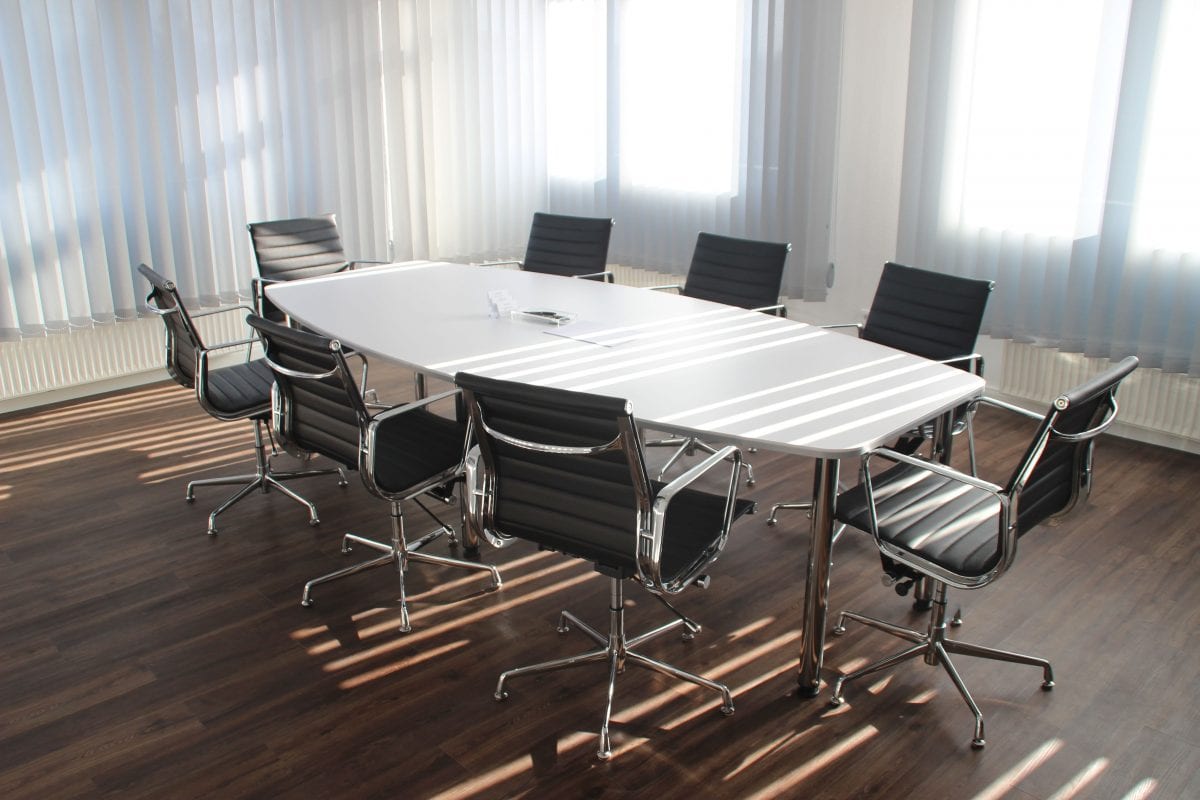
By Aleks Sheynkman
Director of Engineering
SpaceIQ
Closed-off meeting areas play an important role in workplace functions. They provide privacy, accommodations for larger groups, and isolation from an otherwise buzzing office environment. Like any other facet of facilities, these vital spaces need proper oversight and management.
Good conference room management ensures employees use these spaces as intended. Without some form of management, conference rooms might be unavailable or improperly utilized, causing bigger disruptions to the workforce.
Thankfully, conference room management isn’t complicated. A few simple practices, rules, and tips for meeting room management can go a long way in making things work.
1. Adhere to a centralized booking system
Conference room scheduling software is a must-have in the modern office. Though the workplace is more agile than ever, conference rooms still need structure. The ability to reserve these spaces is what makes them useful.
A centralized reservation system should operate in real-time, with scheduling capabilities far into the future. It needs to support the agility of the greater office while still treating conference rooms as bastions of structure and stability. Some features of a good booking system include:
- Real-time availability and next availability metrics
- Multiple reservation resources (email, Slack, intranet, etc.)
- Email confirmation, cancelation, and rescheduling options
- Integration with room-level technologies
The process needs to be simple and uniform for everyone. Jim submits a reservation request and gets a confirmation email. When Jenny looks up the next available time, she sees Jim’s request and can book around it or choose a different conference room. When Jim and Jenny get to their respective rooms at the reserved times, they’re greeted by a digital display telling them they’re in the right place, at the right time.
2. Abide by min-max occupancy levels
Not every conference room has the same capacity. A 12’x12’ space may comfortably accommodate four or five employees—too big for two people and too small for a group of 10. Each room has minimum and maximum occupancy levels to ensure occupants can function effectively in the allotted space. It’s up to facility managers to determine these levels and employees to respect them.
Abiding by min-max occupancy levels accomplishes two things. First, they ensure the right-sized space for different groups where and when they need it. For example, if a three-person meeting occupies a conference room rated for 10, a group of eight might find themselves in a conference room meant for four. Second, it provides insight into what size spaces are optimal. If utilization metrics show the 10-person conference room is rarely utilized, but there’s huge demand for smaller spaces, a company may repurpose it.
3. Delegate where necessary
In larger facilities with several core business units, space becomes a hot commodity. Conference rooms can become territories as different departments jockey to stake a claim. In these situations, it’s often best to intervene and delegate spaces for specific needs.
Marketing, Accounting, and Sales might each get conference spaces only they can use. Or, facility managers might designate room levels to keep non-essential meetings out of spaces where mission-critical planning happens. Conference rooms become task-specific: sales meetings, performance reviews, project planning briefs, visitor meetings, and more.
Splitting up conference rooms by business unit, task, or priority creates accountability for how they’re used. This type of rigid structure may seem like overkill, but it can prevent the territorial mindset from causing real friction in the workplace.
4. Use digital displays outside conference rooms
Technology brings convenience to most office applications—conference room management systems included. Digital displays outside conference rooms are yet another way to make management of these spaces simpler—for both facilities managers and employees.
Digital conference room signage acts as a point of confirmation. The details of a reservation make it apparent that the room is in-use, by whom, for how long, and the nature of the meeting. When they check the screen, someone will see that John is indisposed for the next hour, or that they shouldn’t disrupt an important budget meeting.
Digital signage also helps coordinate booking. Whether they book directly from the screen or use a different reservation method, employees will have the information they need to secure the space they want.
5. Educate staff on best practices
Best practices and rules mean nothing if your employees aren’t aware of them or don’t adhere to them. Make proper conference room utilization part of office policy and create systems that make it easy for employees to conform to it. Good management ensures there’s a conference room available for the people when they need one.
Keep reading: Six Pillars of Conference Room Etiquette.




